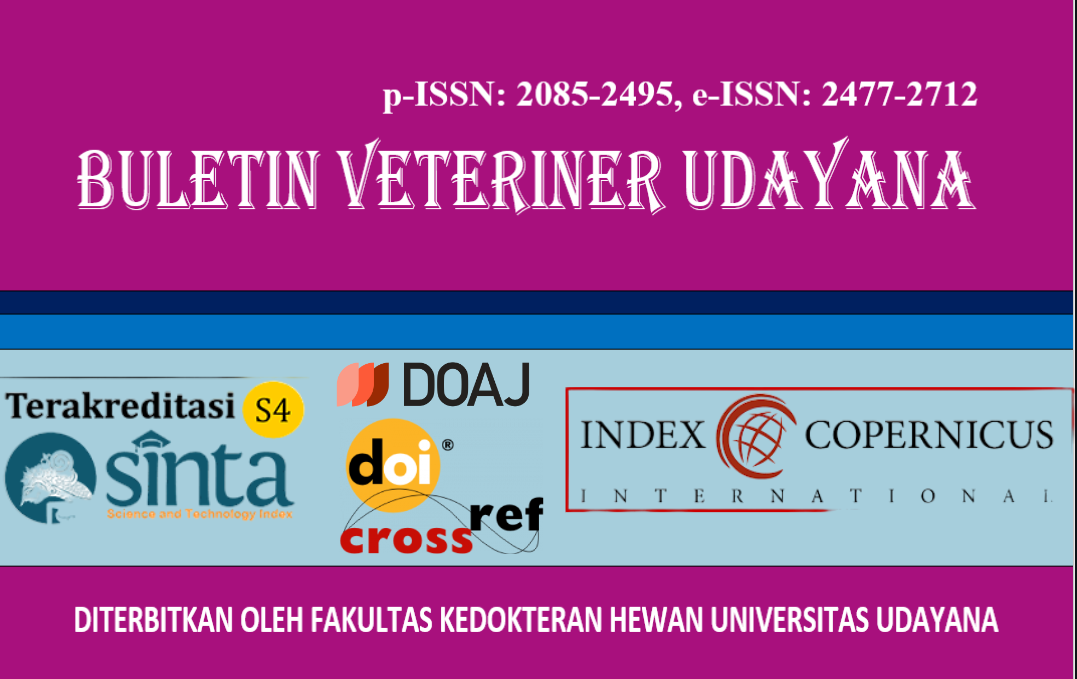PREVALENCE AND RISK FACTORS OF TRICHURIS SUIS INFECTION IN PIGS IN PAYANGAN DISTRICT, GIANYAR REGENCY, BALI
DOI:
https://doi.org/10.24843/bulvet.2025.v17.i04.p11Keywords:
Pigs, Payangan, Trichuris suis, Prevalence, Risk FactorsAbstract
Pig farming is widely recognized by the public due to its relatively simple management and its close integration with community livelihoods. The rapid growth of pig farming in Eastern Indonesia, particularly in Bali Province, is driven by high local demand for pork, the cultural significance of pork-based dishes such as lawar, and the use of pork in traditional and religious ceremonies. Payangan District is known as one of the largest pig farming areas in Bali. To ensure sustainable development, pig farming must be supported by proper husbandry practices to prevent diseases, including parasitic infections such as Trichuris suis. This study aimed to determine the prevalence and identify risk factors associated with T. suis infection in pigs raised in Payangan District, Gianyar Regency. A total of 105 fecal samples were collected and examined using the Whitlock flotation method, with identification based on morphological characteristics. The results showed a T. suis infection prevalence of 20% (21/105). Statistical analysis revealed that age and breed of pigs were significantly associated with infection rates (P < 0.05). These findings provide baseline data for developing effective prevention strategies against T. suis infection in pig population.




